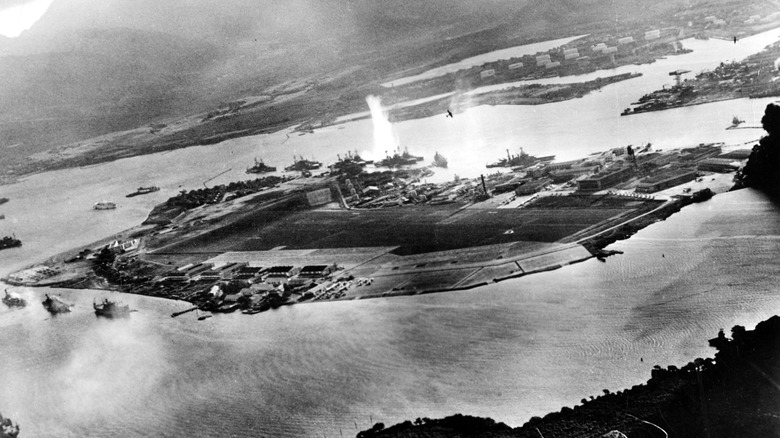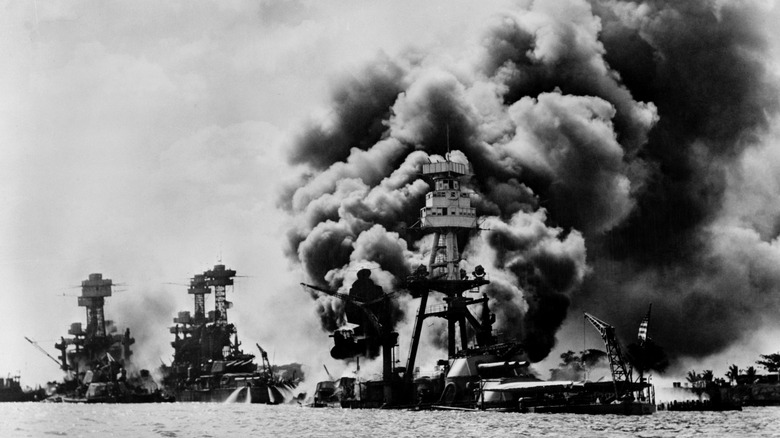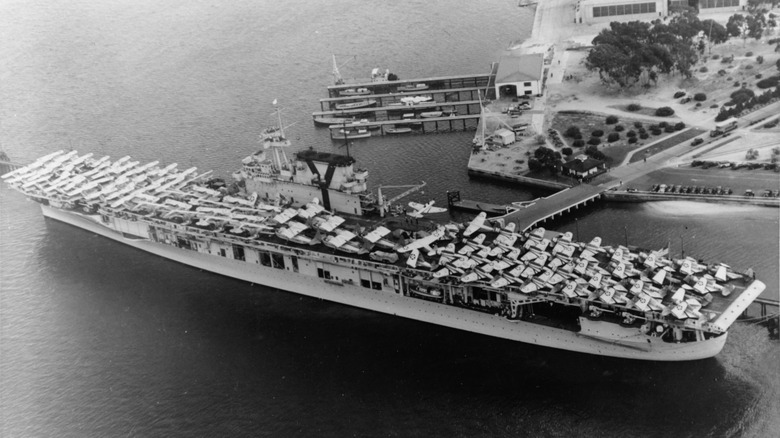Ship Losses At Pearl Harbor: Why No American Aircraft Carriers Were Sunk
The Japanese sneak attack at Pearl Harbor, Hawaii, on December 7, 1941, is truly a day that lives in infamy. In the early hours of that fateful Sunday, Japanese forces struck several high-value targets on the island of Oahu. The Japanese brought a massive fleet consisting of six aircraft carriers, two battleships, two heavy cruisers, one light cruiser, nine destroyers, eight tankers, 23 submarines, five midget submarines, and 420 aircraft.
The Americans had a sizable force in the harbor and on the island, but the sneak attack took out numerous targets before U.S. forces could respond. The U.S. Navy had eight battleships, eight cruisers, 30 destroyers, four submarines, and nearly 400 aircraft, but they all sat in various stages of readiness, which made them excellent targets for Japanese attackers. The attack was disastrous for American forces, costing them dearly.
When the smoke faded, and the dust settled, the Americans lost four battleships and nearly 200 aircraft, and over 3,400 personnel were killed. The attack should have utterly crippled American forces in the Pacific Ocean, but there was one thing the Japanese didn't count on. The U.S. Navy's Pacific aircraft carrier fleet was elsewhere, and after the attack, they became some of the most important vessels the U.S. held in the Pacific theater.
[Featured image by Imperial Japanese Navy via Wikimedia Commons | Cropped and scaled | Public Domain]
American and Japanese losses at Pearl Harbor
While the U.S. fleet of aircraft carriers was spared any damage from the attack at Pearl Harbor, the rest of the fleet wasn't so lucky. Most vessels were anchored at port and weren't prepared to intercept or defend against a massive Japanese force of aircraft, submarines, and surface vessels. While the Japanese lost their fair share of lives and equipment, the U.S. took the brunt of the assault, and the losses were immense.
The U.S. wasn't at war with Japan before December 7, 1941, but it was soon after, thanks to the devastation brought upon the military and civilian population of Hawaii. In terms of personnel, the Congressional investigation into the attack found that 3,435 were lost, including 49 civilians. The loss of life was significant, but the loss of seaworthy vessels put the Americans in a position that required an altered strategy of "island hopping" in the Pacific to counter the Japanese threat.
Regarding the ships lost and damaged at Pearl Harbor, the U.S. lost seven vessels, including four battleships. All told, 15 vessels suffered light damage, while 11 received moderate to severe damage. In terms of air power, Japan severely damaged or destroyed 188 planes, many of which were damaged or destroyed while on the ground. Japan lost fewer than 100 personnel, five submarines, and only 29 planes, so the Japanese definitely won the battle, but the U.S. was only getting started in World War II, and thankfully, it still had aircraft carriers.
American aircraft carrier locations on December 7, 1941
On the day of the attack, the U.S. had three legendary aircraft carriers operating in the Pacific: The USS Enterprise (CV-6), USS Lexington (CV-2), and USS Saratoga (CV-3). The USS Enterprise escorted 12 Grumman F4F-3 Wildcats to Wake Island and was on its way back to Pearl Harbor on the morning of the attack. It was accompanied by nine destroyers under the command of Vice Admiral William F. Halsey, Jr.
Two days before the attack, the USS Lexington was established as TF-12, which ferried 18 Vought SB2U-3 Vindicators to Midway Island. The task force was about 400 miles from Midway when the attack commenced, leaving the Lexington and its three heavy cruisers and five cruisers out of the fight. The USS Saratoga was at Naval Air Station San Diego on the day of the attack, awaiting orders to embark with her air group and Marine Fighting Squadron 221.
The U.S. had more than those three carriers at the time of the attack, but they were operating in the Atlantic Ocean: The USS Yorktown (CV-5), USS Ranger (CV-4), and the USS Wasp (CV-7), as well as aircraft escort ship USS Long Island (AVG-1), were nowhere near Pearl Harbor on December 7, 1941. Additionally, the USS Hornet (CV-8) had just been constructed and hadn't performed her shakedown cruise. On December 16, 1941, the Yorktown made its way to the Pacific Theater.
[Featured image by U.S. Navy via Wikimedia Commons | Cropped and scaled | Public Domain]


